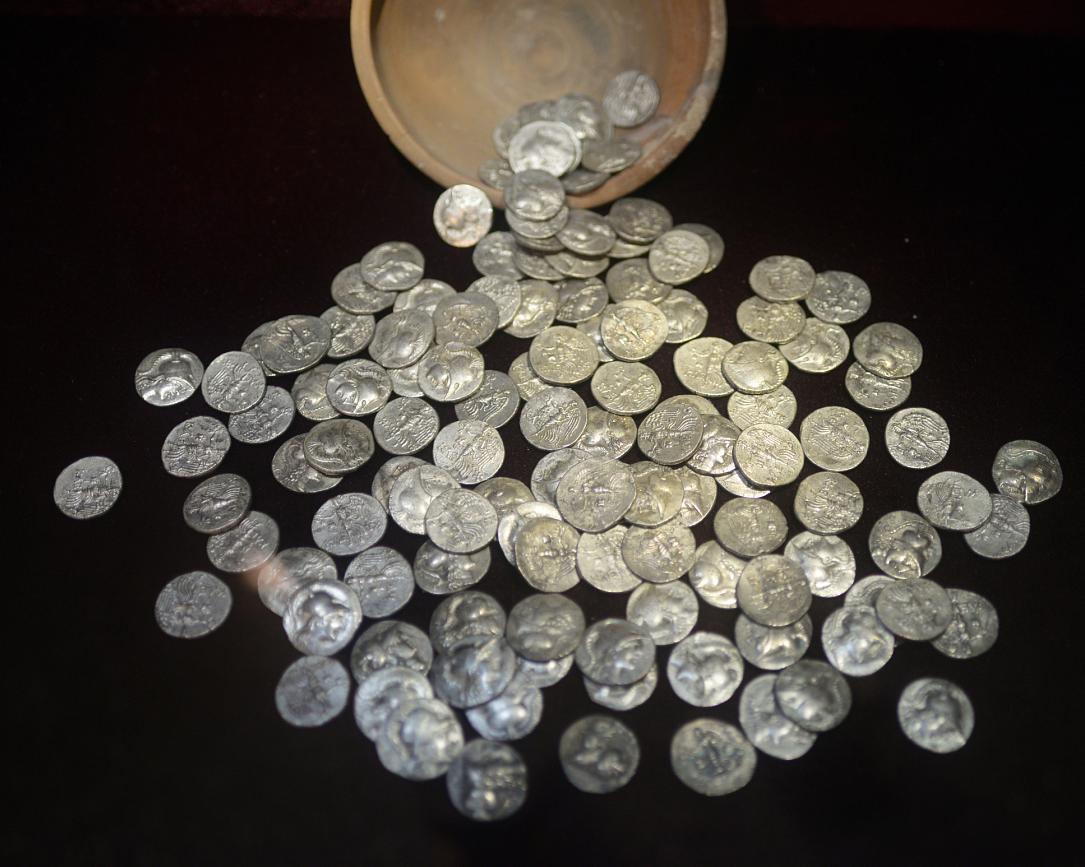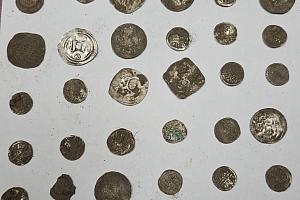2000-year-old treasure found in a forest of Mureș county, central Romania

A treasure hunter from Mureș County has discovered a hoard of silver coins dating back to the time of the Romans. The more than 300 coins were found in a clay pot, buried in the earth of the forest of Sângeru de Pădure, which the man had been scanning with a metal detector.
The 43-year-old treasure hunter, Narcis Carțiș, is an impassioned history lover and enjoys spending his free time searching for archaeological remains. In fact, the discovery he just made is not his first. About a year and a half ago, Mr. Carțiș obtained his detectorist’s license, and since then he has made three archeological discoveries. The first time he discovered four tetradrachms, large silver coins originating in Ancient Greece which were the standard coin of the Antiquity. The second discovery was a pot full of coins dating from Antiquity which he found in the Ernei area of Mureș county. And now this hoard from the forest of Sângeru de Pădure.
“I search exceptionally diligently, and I've covered about 50% of the forest already. These kinds of finds are a matter of luck. You can't have a plan, it’s not possible to know where you're going to find something. It's all about having luck and being persistent. When you hear the sound of the detector, you don't know what you've found, because all metal sounds the same, so you don't know what you've got in the ground. You can't go by maps because there aren't any, you just have to be lucky,” Narcis Carțiș told the press.
He described the moment of discovery, saying: “I experienced such joy when I saw what I’d found! It's the third time I've discovered something valuable. The first time I howled with joy. Another reason to be joyous is the fact that detectorists are rewarded if they report their discovery to a museum with 30-40% of the value of the discovered object.
After inspecting the pot filled with coins, while making sure not to move it from its current position in the ground, Mr. Carțiș contacted the Mureș County Museum.
On Thursday, June 16, the head of the Archaeology Department of the Mureș County Museum, Nicoleta Man, went to the discovery site, taking a team of specialists with her. The specialists determined the historical characteristics of the treasure.
Nicoleta Man told the press what she and her team had ascertained: “This discovery is a Roman treasure. It was a common practice in those days to hide one’s wealth, which had accumulated over a generation or several generations. The period over which this particular hoard was collected is something we will determine upon further inspection. According to the typical practice of the time, the wealth was deposited in a pot, in this case, a Roman pot which, according to its shape and the material that was used, was produced in the workshops of Cristești. Inside there are traces of bronze verdigris, so it could be that in addition to silver coins there are also bronze coins or objects.”
According to Mrs. Man, the area of Mureș County is an archeologically fertile one. The Archaeology Department head told the press that multiple discoveries have been made in the past two years, with hoards consisting of coins and jewelry having been found in Dâmbău, Sighișoara, Dumbrăvioara, Cristești, and a huge one in Sălașuri.
She also stated that this area is presumed to have contained a Dacian Fortress and a Roman settlement, which would explain the high concentration of treasure left behind.
maia@romania-insider.com
(Photo source: Ruslanchik | Dreamstime.com)













